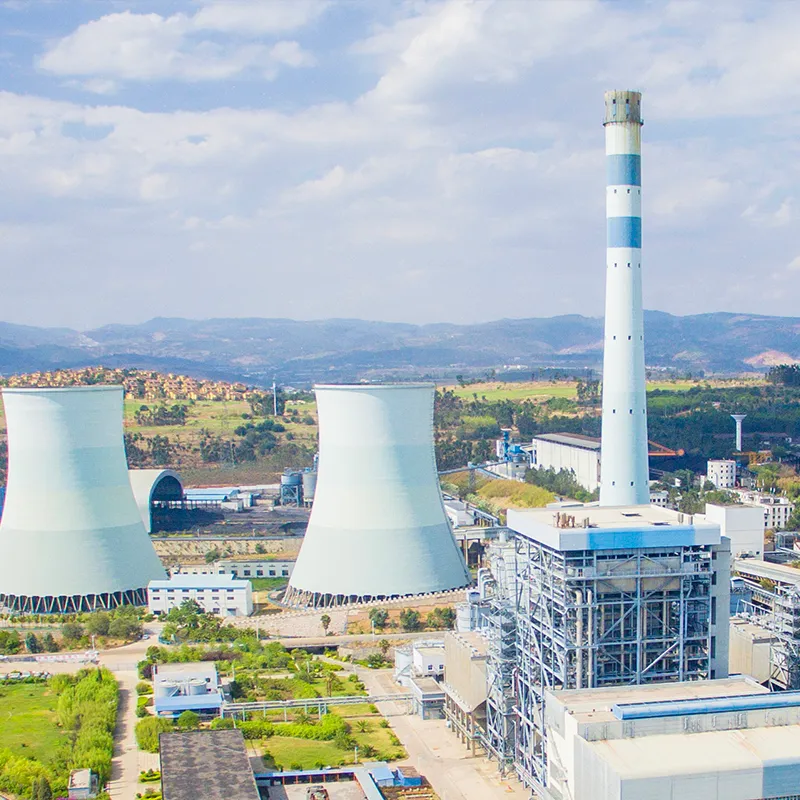Garapena energia industrialeko garbiko noranzkoan
Energia garbiaren eskariaren handitzeak industria asko sustengarriagoak eta efektiboagoak diren kutsadura kontrolatzeko teknologietara bideratu ditu. Berrikuntza horietako bat eskuragailu-gasen desulfurazio prozesua da, garrantzi handiz jarduten duena azufre dioxidoaren igorpenak murrizten termozentroetatik eta instalazio industrialeetatik. Gobernuak mundu osoan zehar igorpen estandarrak gogortuz doazen heinean, sistema sendoa integratzeko garrantzia eskuragailu-gasen desulfuraziorako eskuragailu-gasen desulfurazio sistema handiagoa da.
Eskuragailu-gasen desulfurazioaren oinarrizko printzipioak
Prozesuaren atzean dauden erreakzio kimikoak
Erregaien desulfurazioa azterkiaren azido sulfurikoaren (SO2) kentzearen bidez lortzen da, fosil-erradiozko indarreko planten ontzietan. Metodo erabilienak azido sulfurikoaren eta sorbente baten arteko erreakzio kimikoan datza, normalean lima edo arriaren gainean. Erreakzio honek gipsua sortzen du, eraikuntza-materialen bigarren produktu gisa erabil daitekeena. Kimikak kaltetarako igorpenen murrizketa nabarmena bermatzen du.
Desulfurazio-sistemaren motak
Flue gas desulfurazio sistemaren bi kategoria nagusiak dira hezetasun handikoak eta lehorrekoak. Hezetasun handikoek likido baten bidez kapturatzen dute azido sulfurikoa, horregatik eraginkorrak eta zabalduak dira koadro termikoetan. Bestalde, lehorrekoek reaktiboko neblina fina igortzen dute ontzietako gasen fluxuan. Bi sistema horiek abantaila bereziak dituzte eta instalazioaren beharretan oinarrituta aukeratzen dira.
Eragina ingurumenean eta arauaren babespena
Euri azidoaren kausa diren igorpenen murrizketa
Industri-esketzetatik sufre dioxidoaren zati handi bat ezabatzean, haize goragailuaren desufurazioak euria azidoaren eraketa nabarmen murrizten du. Euria azidoa ingurumen-arazo larria da, lurzoruaren kalitatea, ekosistema urdinak eta basoen osasuna eragiten dituena. Haize goragailuaren desufurazio sistema eraginkorra instalatzea ingurumena babesteko emandako pauso garrantzitsua da.
Nazioarteko Eskuemaldaketa Estatandarrak betetzea
Haize goragailuen desufurazioak instalazioei nazioarteko eta ingurumen arau lokalak betetzeko aukera ematen die. Eskemaldaketa politika zorrotzak dituzten herrialdeek behartu egiten dituzte zentral elektrikoak eta industria handiak desufuratzeko unitateak instalatzen eragiketak egiteko aurrebaldintza gisa. Honek ez du soilik betebeharrak betetzen, baizik eta enpresaren izena hobetzen du ere ingurumenaren zaintza erantzutsu gisa.

Kontsiderazio ekonomiko eta eragikorrak
Luzera den kostu efizientzia
Hasperen teknologian hasierako inbertsioa handia izan daitekeen arren, etorkizuneko onurak aurreko gastuak baino garrantzitsuagoak dira. Kaltegarri gutxiago ekarriko dituzte, onduren kudeaketa hobea izango da eta sustapen berdeentzako eskubidea ere izango dute. Gainera, FGDren ondurren bat, hala nola gipsua, saldu daiteke eta diru-sarrerak izateko aukera ematen du.
Ekintza Ziurtagiria eta Prestakuntza
Gaur egungo hasperen garbiketa sistemak iraunkortasun eta errendimendu egonkorra izateko diseinatuta daude. Sistemak instalazioaren kontrol-sistemekin integratzeak behaketa jarraia eta errealitateko doikuntzak egitea ahalbidetzen du. Azufrearen kentzean lortutako errendimendu altuak eragin positiboa dute instalazioaren funtzionamenduan eta mantentze lanetarako geldialdi gutxiago izango dira, horrek orokorreko produktibitatea hobetzen duela.
Garapen Garbiko Helburuekin Integrazioa
Energia Berriztagarrien Trantsizioaren Laguntza
Energia berriztagarrietara bideratzean, gasen desulfurazioak papera jokatzen du zuzeneko izan gabe ere oinarrizkoa dena. Aldaketaren bitartean, fosil-plantak oraindik martxan daude eta FGD sistemaak ezartzeak ingurumen-eragin txikiagoa izango dutela bermatzen du. Horrek egiten du aldi-garaia iraunkorragoa eta energia tradizionalak energia garbien helburuekin lerrokatzen ditu.
Publikoaren eta interesdunen konfiantza areagotzea
Gasen desulfurazioaren ezarpenak ingurumenari buruzko ardura erakusten du enpresa batek. Ardura horrek harremanak indartzen ditu interesdunekin, hobetzen du publikoaren irudia eta erakartzen ditu lankidetzak ingurumenari buruzko ezagutza duten erakundeei. Energia garbien ekimenen babes publikoa indartzen da industriek beren emisioak murrizten dituztenean.
Desulfurazioan aurrerapen teknologikoak
Automatizazioa eta Monitorizazio Digitala
Berrikuntza teknologiko berriek automatizazioa eta gainbegiratze digital aurreratua ekarri dizkiote gasen desulfurazio sistemei. Ezaugarri hauek datu errealak eskaintzen dituzte, mantentze aurreikuslearen abisuen eta eraginkortasunaren optimizazio tresnen bidez. Emaitza sistema fidagarriagoa eta eragiketak gutxiago izatea da.
Sistema konpaktu eta modularrak
Gaur egungo gasen desulfurazio unitateak gehienetan diseinu konpaktu eta modularrak erabiliz eraikitzen dira. Konfigurazio hauek instalazioa eta eskalak errazten dituzte, bereziki espazio mugatua duten instalazioetan. Sistemak modularrak izatearen malgutasunak eraikuntza pertsonalizatua ahalbidetzen du, planta jakin baten beharretara egokitzea ahalbidetuz eraginkortasuna galdu gabe.
Aplikazio Industrialean Doitzapena
Energia sektore ezberdinetan aplikazioa
Ez du nahastea gasen desulfurazioa soilik erradio termikoetan erabiltzen, baita beste sektore batzuetan ere, hala nola petrolio errefinategietan, metalurgia lantegietan eta hondakinak suntsitzen dituzten plantetan. Industria horietako bakoitzak onuratzen du azufrearen igorpenak murrizteaz eta ingurumenaren kalitatea hobetzeaz.
Soluzio pertsonalizatuak industria behar berezietarako
Industria desberdinek behar dituzte gasen desulfuraziorako soluzio pertsonalizatuak, igorpen bolumen, prozesu konplexutasun eta araudi ezberdinetarako egokitzeko. Ingeniariak eta kontsultore ingurumenek elkarlanean lan egin behar dute eraginkortasun, kostu eta araudiaren arteko oreka mantentzeko industria aplikazio ezberdinetan.
Askotan egiten diren galderak
Zein da gasen desulfurazioaren helburu nagusia?
Gasen desulfurazioaren helburu nagusia da azufre dioxidoaren igorpenak murriztea industria jangatik. Horrek lagunduko du euri azidoaren eta airearen kalitatearen arazoak saihesteko.
Zein da eraginkorragoa, gasen desulfurazio sistema hezeak edo lehorra?
Ukipetan dauden sistemak normalean efektuagoak dira dioxido de azufrea kentzeko, batez ere gaitasun handiko instalazioetan. Hala ere, lehorreko sistemak maiz erabiltzen dira instalazio txikietan hasierako kostuak baxuagoak eta mantentzea errazagoa direlako.
Ekonomikoki biablea da tximin bidezko azufre oxidoen kentzea plantaren guztientzat?
Hasierako inbertsio handia bada ere, bigarren eskuko onurak, arauzko jarraipena eta kalte ekologikoen zergak murriztea bezalako onura ekonomikoak maiz egiten dute FGD sistemak inbertsio meregarri bihurtzen.
Tximin bidezko azufre oxidoen kentzearen sistemak aurretik eraikitako plantetan instalatu daitezke?
Bai, flue gas desulfurization sistemaren gehienak instalazio dagoenekoaren barnean sartzeko diseinatuta daude. Egiten daitekeenaren erabakia espazio eskuragarriaren, aurretiko emissioen mailen eta instalazioaren diseinaren araberakoa da.
Edukien zerrenda
- Garapena energia industrialeko garbiko noranzkoan
- Eskuragailu-gasen desulfurazioaren oinarrizko printzipioak
- Eragina ingurumenean eta arauaren babespena
- Kontsiderazio ekonomiko eta eragikorrak
- Garapen Garbiko Helburuekin Integrazioa
- Desulfurazioan aurrerapen teknologikoak
- Aplikazio Industrialean Doitzapena
-
Askotan egiten diren galderak
- Zein da gasen desulfurazioaren helburu nagusia?
- Zein da eraginkorragoa, gasen desulfurazio sistema hezeak edo lehorra?
- Ekonomikoki biablea da tximin bidezko azufre oxidoen kentzea plantaren guztientzat?
- Tximin bidezko azufre oxidoen kentzearen sistemak aurretik eraikitako plantetan instalatu daitezke?


